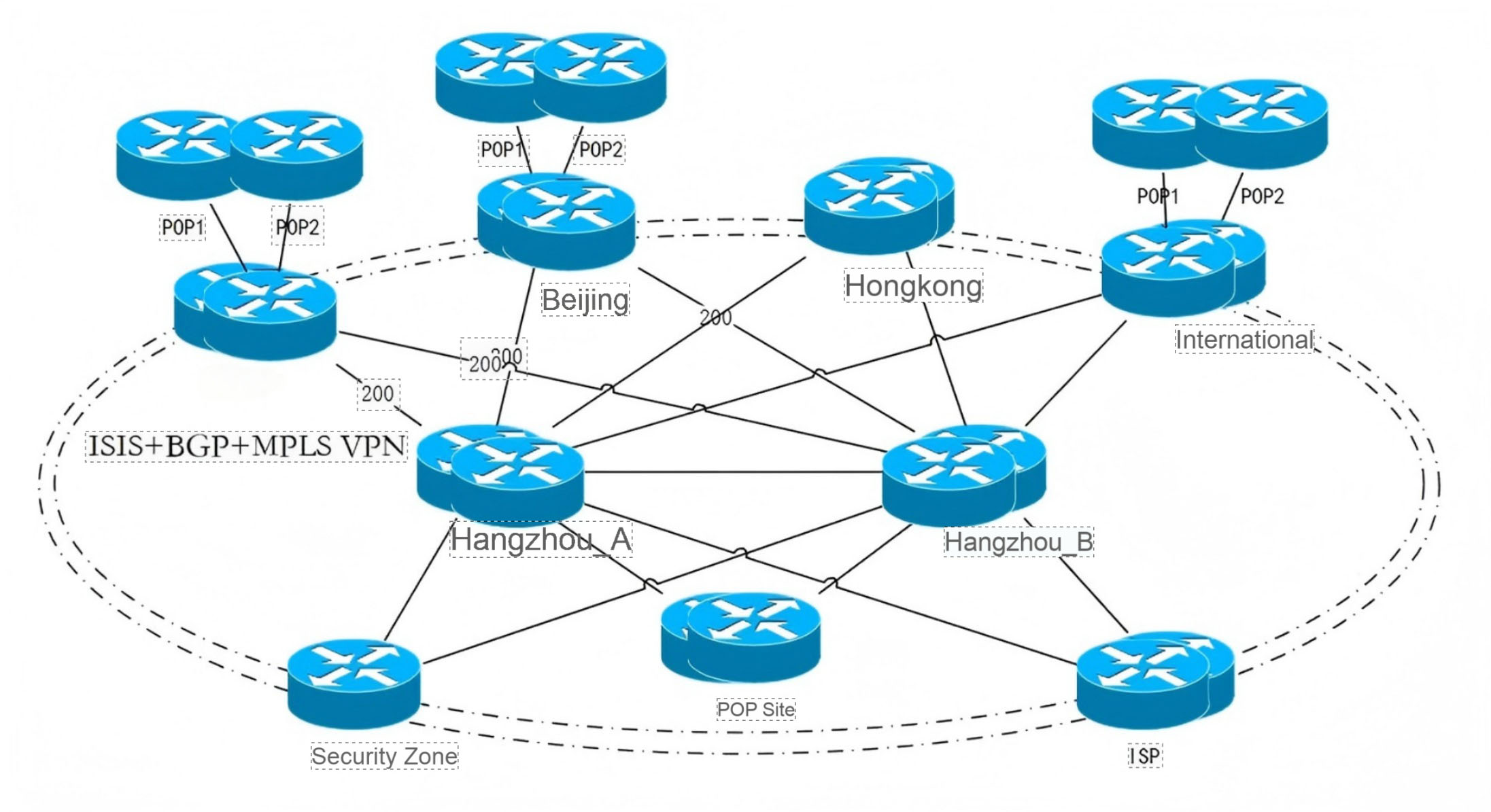Solution Background
As a diversified internet conglomerate with a comprehensive business portfolio spanning gaming, cloud services, music streaming, e-commerce, education technology, and web portals, the company is experiencing rapid business expansion and sustained user base growth. This accelerated development has led to increasing complexity in its global network infrastructure. While having established an extensive network of data centers and advanced networking equipment across domestic and international markets, the organization now confronts multifaceted challenges in network maintenance management. These include dynamic resource allocation, cybersecurity vulnerabilities, real-time incident response, and seamless integration of emerging technologies.
Solution Overview
Core Network Architecture
- Data Center Deployment: The company has established over 30 data centers worldwide, covering key cities in China and overseas. This global network ensures business continuity and stable operations across all regions.
- Core Exit Configuration: Dual-node core exit points are established in major cities such as Hangzhou, Beijing, and Guangzhou. These locations are equipped with high-end Cisco ASR9000, ASR9900, and NCS5500 series routers to ensure high-speed, stable data transmission capable of handling massive traffic demands.
- Core Devices: More than 70 core devices for both internal and external networks have been deployed, primarily using Cisco Nexus series data center switches. In China alone, the company has over 1,500 Cisco devices, providing a solid foundation for network reliability and scalability.
Business and Equipment Growth Trends
The company employs a dual-core topology architecture. With continuous business expansion, it conducts large-scale annual procurement of routers, switches, and servers – particularly for gaming operations. The network architecture undergoes persistent optimization iterations, actively adopting innovative internet technologies to maintain industry-leading technical competitiveness.

Service Scope
- Infrastructure and Equipment Services: Full lifecycle services, including planning, design, deployment, equipment selection, procurement, installation, testing, maintenance, and upgrades.
- Enterprise Operations and Maintenance (O&M) Support: Comprehensive O&M services for all business systems, covering real-time monitoring, scheduled inspections, and rapid fault response to ensure stability and business continuity.
- IDC Construction Services: Full participation in IDC planning, site selection, construction, and deployment, ensuring data centers meet both business and performance requirements.
- Solution Design and Integration: Customized network architecture tailored to specific business needs, including device integration and system commissioning to enable seamless interoperability.
Customer Pain Points & Challenges
- O&M Efficiency Bottlenecks: Multiple business lines operate independently without a centralized dispatch platform, leading to cross-departmental coordination delays in fault resolution, prolonged downtime, and business disruptions.
- High Operational Costs: Decentralized procurement reduces bargaining power, increasing hardware costs. Redundant O&M teams result in inefficient labor allocation and low resource utilization.
- Technology Compatibility Issues: Difficulties integrating new technologies with legacy infrastructure due to incompatible standards and device limitations, delaying project implementation and innovation.
- Inconsistent Service Quality: Non-core regions experience slower vendor response times, with fault resolution often exceeding 48 hours, negatively impacting user experience and business expansion.
Competitive Advantages
- Rapid Response Mechanism: 24/7 dedicated support hotline with technical experts on standby. Remote response within 15 minutes and on-site arrival within 2 hours for critical issues.
- Cost Optimization Strategy: Centralized procurement and resource integration reduce equipment and O&M costs, enabling enterprises to manage budgets more effectively.
- Full-Stack Technical Coverage: End-to-end support covering network devices, servers, storage, operating systems, and application software to address diverse technical requirements.
- Standards-Based Management: Compliance with ISO 20000 and other industry standards standardizes O&M processes, minimizing human error and ensuring consistent service quality.
- Professional Technical Team: A team with extensive experience in Cisco equipment management, including multiple CCIE-certified engineers, delivers customized solutions tailored to enterprise requirements.
- Proactive Maintenance Model: Regular inspections and data-driven risk forecasting enable preemptive actions and network optimization recommendations for continuous improvement.
Customer Value
- Enhanced O&M Efficiency: Significantly reduces fault location time and cuts annual business downtime by 90%, which improves overall operational efficiency.
- Lower Operational Costs: Reduces equipment procurement and labor costs, while increasing resource utilization—resulting in substantial annual cost savings.
- Accelerated Technology Adoption: Enables smooth deployment of new technologies to support low-latency responses in gaming scenarios, enhancing user experience and product competitiveness.
- Talent Development: Combined with training and expert support, the solution helps the company develop versatile network professionals, strengthening its long-term talent pipeline.
- Improved Service Quality: Achieves 99% SLA compliance rate for fault resolution and reduces resolution times in non-core regions by 90%, resulting in enhanced user satisfaction.